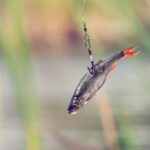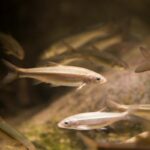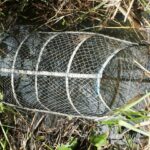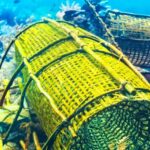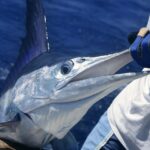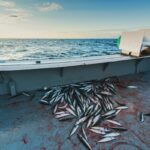Not everyone chooses to fish with live bait, but doing so has a huge advantage! Fish are more likely to go towards live prey than dead.
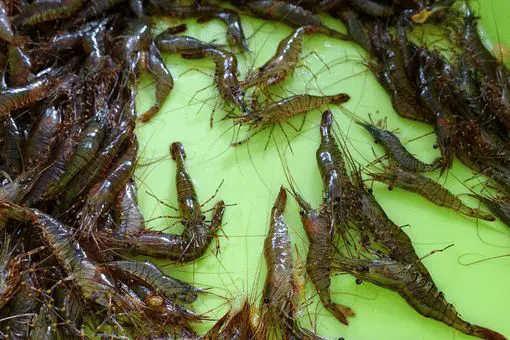
If the bait naturally moves and doesn’t smell suspicious, more fish are likely to swim towards the prey, meaning you have a greater chance of catching more fish.
You can save money on shrimp by catching them yourself, but if you’re not sure how to do this, you’re in the right place!
We’ll tell you how to catch, hook, and keep your shrimp alive. This will take some practice if you’re a beginner, but if you keep consistent, you’ll be fishing like the professionals in no time. You’ll also find out what types of fish can be caught using shrimp as bait, so you can keep a lookout for them in the future.
Is Live Shrimp Better Fishing Bait?
In short, yes! Using live shrimp gives you several advantages. Shrimp are found all around the world, so several types of fish consume them as food.
When shrimp are stored and hooked correctly, they can live for a while when hooked. If they’re alive, they will be active and move around while on the hook, making them great bait.
Fish prefer to feed on injured prey, so they will prefer to swim towards live fish flailing about on a hook. The shrimp will also give off a scent that fish can smell many miles away, attracting more fish towards you.
Shrimps can also survive under many different temperatures, so they can be used as bait through various seasons. Lots of fisherfolk prefer to use shrimp in colder temperatures, as the bait naturally becomes slower during this time.
The shrimp won’t move too fast, so the fish won’t see the bait as too difficult to prey on. Slower shrimp will work better than quicker ones.
Shrimp are suitable for fresh and saltwater, and if you don’t have any live ones available, dead ones will do in a pinch.
If you’re fishing in saltwater, live shrimp will do better for inshore fishing. You can also use live shrimp with floats, which is ideal for beginners who have just started learning how to use live bait and general fishing.
Fish Which Can Be Caught With Shrimp
Live shrimp is a very good bait, so you can catch endless types of fish with it. Most anglers will have their preferences, but they’ll often choose live shrimp as their bait of choice.
Saltwater Fish
Saltwater fish tend to feed on the bottom where shrimp is in an abundant supply. Some of these fish are often sourced from European waters, but others can be seen all around the globe.
Cobia
Cobia is a great catch to show off due to its impressive stature. These fish tend to prey on crabs, but they have an amazing vision that can spot injured shrimp from far away.
The cobia will swim straight towards the live shrimp moving on your hook, making them great bait to use when attempting to catch one.
Cobia normally swims in coastal waters nearer to the shore, so you don’t need to sail out too far to catch them. You may even have good luck fishing for them straight off a pier!
European Seabass
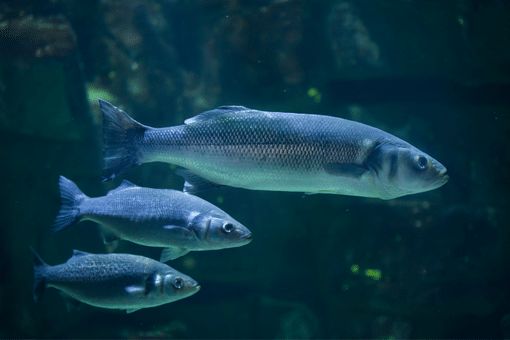
This type of seabass is one of the most common types of fish caught by European fisherfolk. These fish are difficult to catch. If you do manage to catch one, they’ll work hard to get off. Using live shrimp as bait will make it easier to catch them.
European Seabass usually swim towards shallower waters when the weather gets warmer, so you’ll have better luck fishing from the shore.
Sea Bream
You can use shrimp to catch sea bream, but lots of fishers tend to use other types of bait to do so.
Despite this, if you have tried using baitfish and other types of bait with no success, try using live shrimp instead. It may work better than you think.
Like seabass, sea bream swims towards shallower water when the weather gets warmer. You’ll have more luck catching this type of fish in shallower water during hotter months.
Common Pandora
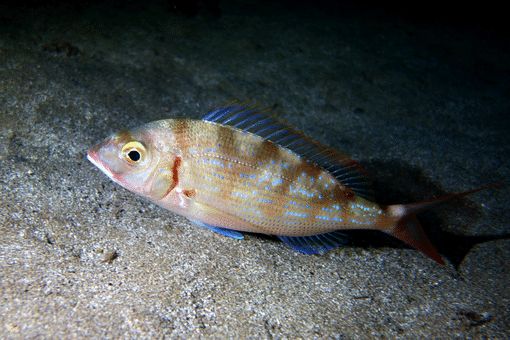
Common pandora is usually found in coastal locations with particularly sandy bottoms. They’re usually caught by drifting or bottom fishing. Live shrimp is the best bait to use with these two methods.
Redfish
Redfish are aggressive and resilient, so they can be harder to catch. Live bait will increase your chances of doing so, but you should always choose bait that works well with your location.
If you’re fishing in the coastline or shallow waters, live shrimp will work better than other kinds of bait.
Wahoo
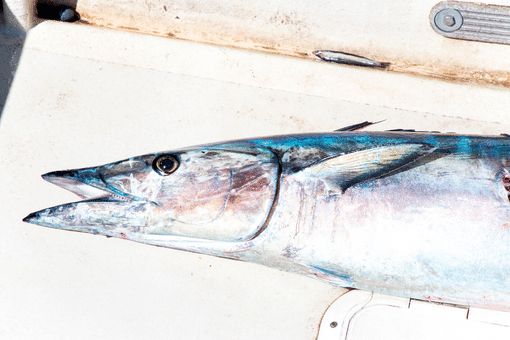
Wahoos are slippery kinds of fish. They’re usually found in clear waters that have plenty of hiding spots, which makes them difficult to catch.
If you’re trying to catch a wahoo, try to find a location with plenty of shelter underwater. Using live shrimp will attract the wahoo, which increases your chances of catching them.
Speckled Sea Trout
Seatrout is hard to catch as they love to travel in strong currents, which could be dangerous. They thrive deep within the water where light barely reaches.
Dark and deep waters are their preferred setting. They may be difficult to find, but like the fish on this list, they can’t resist the sight of live shrimp.
Snook
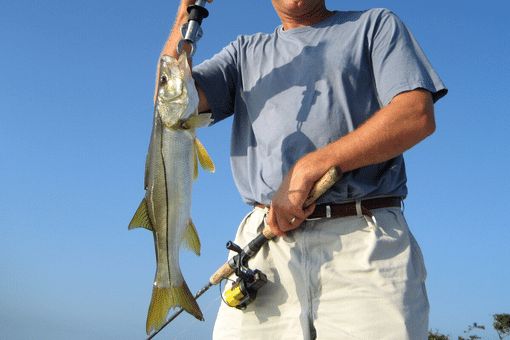
Snooks tend to ignore general baitfish, but they will swim towards live shrimp once they are in their sightline. If you’re trying to catch a snook, use live shrimp when fishing during the colder months. The temperature will slow down the snook, making them easier to catch.
Flounder
Flounders are seen towards the shore and out in deeper waters. You’ll have better luck catching them when the tides move over a year. You can use several kinds of bait to catch flounder, but live shrimp is one of the better ones to use.
Freshwater Fish
Live shrimp are great to catch saltwater fish, but they can be used to catch freshwater fish as well. Most freshwater fish will swim towards living freshwater shrimp.
They are less likely to be caught when using dead saltwater shrimp, but it isn’t impossible to do so. These fish are normally bullheads or catfish.
Bluegill
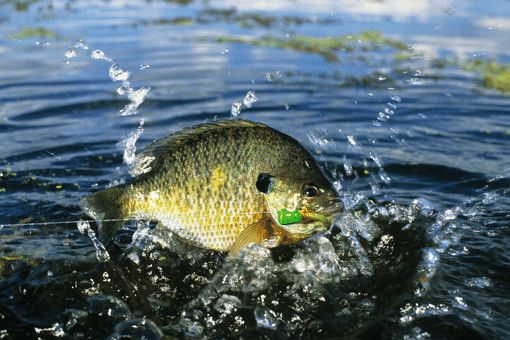
Like yellow perch, the bluegill is best caught using smaller shrimp. They can be cut into little bits if necessary. You can do this throughout the year in all temperatures.
Walleye
Fishers tend to catch walleye by using minnows nightcrawlers as bait. If this method isn’t working for you, switch to live shrimp instead. Try searching for walleye during spring and see if using live shrimp makes a difference.
Bass
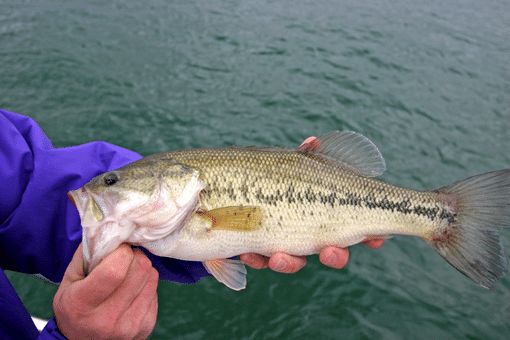
Bass finds live bait irresistible, so you can use this to your advantage. You can normally find bass loitering in weed beds and underwater shelters. Set the shrimp within these spots and the bass should come out from hiding.
Crappie
Some crappies do flock towards shrimp, but this will depend on their age. Try catching crappies through float fishing. Older ones will prefer baitfish, but younger crappies will swim straight towards live shrimp.
Yellow Perch
Yellow perch adore live bait, so you can use live shrimp throughout the year, even during colder weather. It’s best to use smaller shrimp instead of larger ones, but yellow perch aren’t picky! They’ll even swim towards cut or dead shrimp if that’s all you have available.
Catfish
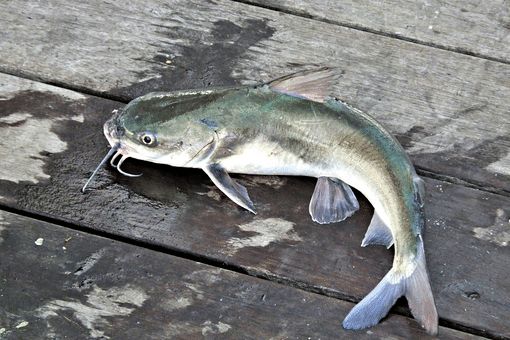
Catfish love eating any prey that smells appealing, which even includes dead shrimp. If you’re trying to catch catfish, aim your shrimp towards the bottom and see how your chances improve.
Suitable Locations To Fish With Live Shrimp
If you’re learning how to use live shrimp as bait, you need to fish in the right locations. Live shrimp are normally used during inshore saltwater and freshwater fishing. This bait can be used anywhere, as long as the fish within the water see shrimp as a natural food source.
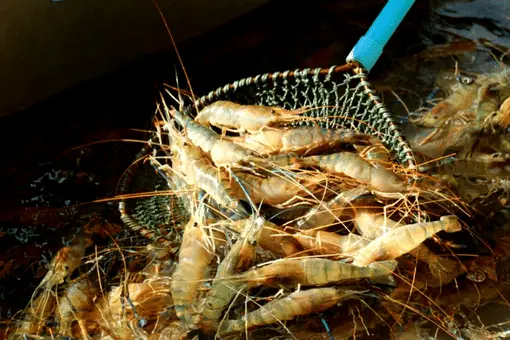
Shrimp can be used in all water settings, but they work better in gloomier, darker waters. If you source your shrimp yourself, fish within the waters in which you caught the bait. This will help you be sure that the fishing location will work best with your bait.
If you’re fishing in freshwater, some fish, like bluegills, prefer shrimp in hotter temperatures when the water becomes clear. If not, place your shrimp in murkier waters. This should be close to the cover, but not near enough for the bait to hide in. This will increase your chances of getting fish to bite.
How clear the water isn’t a huge factor if you decide to fish with dead shrimp. If you are fishing with saltwater, you can fish on the shore no matter what the water looks like. If you do this, make sure that you put the live shrimp in an area with limited hiding places.
How To Hook Live Shrimp
You may need to practice a few times to hook live shrimp, but the actual process isn’t too difficult. There are four methods of hooking live shrimp. Some are easier for fishing newbies, while others have certain advantages.
Before you begin hooking live shrimp, you should know that you should avoid hooking the shrimp in two places. Always keep away from their stomach and where their tail starts, in the dark area behind their head.
The first and simplest way to hook a live shrimp is through their upper side, on the carapace. Hook it from one end to the other, making sure you don’t pierce too deeply. This is the best method to start with if you are a beginner.
The second hooking method does increase casting distance, but it will kill the shrimp quicker. This is done by hooking the shrimp under the chin. This may seem easy enough, but it is harder as you need to avoid hooking through the shrimp’s organs.
To do this, draw the hook through the bottom, thread it under the chin, then the side. Then, prise it through the upper side behind a horn.
The third hooking method involves hooking through the shrimp’s tail. This involves slicing off the tail fan, then prising the hook through the middle, inside of the tail, pulling as much as you can. Then draw it out through one end. This method also helps with scent as it removes part of the shrimp.
The last hooking method involves piercing the tail. You do this through the last tail’s third, piercing from one end to the other. These last two methods are good for drift fishing, as they allow you to cast impressive distances.
The Best Method To Catch Shrimp
Learning how to fish with live shrimp involves catching them first! The simplest way to catch shrimp is by using a plastic bottle.
- You begin by cleaning the bottle with water. If it contained anything other than water, like juice or soda, make sure you rinse it well. Cut the bottle’s upper third off.
- Take the cork out. If your bottle has a big cork, pierce a hole that’s big enough to let shrimp pass through.
- Turn the upper bottle upside down, then place it within the bottom half, attaching the two components.
- Fill it with shrimp bait, like fishmeal or cornmeal. This bait may look different depending on where you’re fishing and the water’s clarity. You can use this method in both salt and freshwater.
- Once you add the bait, place your bottle underwater, positioning it in a place where shrimp thrive. Leave it alone overnight. If you don’t have a lot of time, leave it for a few hours at a minimum. Attach a fishing line to it in case it starts drifting away.
This shrimp trap works well, as shrimp can smell the bait, enter the bottle, but won’t be able to escape.
How To Keep Shrimp Alive
It’s important to keep shrimp alive, particularly during longer fishing trips. Oxygen is a big factor. If you don’t supply the shrimp with enough oxygen, you will have to change the water regularly or use aerators.
Aerators are a better choice as you won’t have to worry about changing the water too often. Changing the water can also shock the shrimp as they switch to different types of water and various temperature changes.
The water needs to be cold and shady, away from strong sunlight. You can keep the water cold by placing frozen water bottles into their bucket.
The water always should be clean, so do change some of it if you see any slow or dead shrimp. Once you see any dead shrimp, it’s best to remove the dead shrimp immediately.
Use a portable net to take the shrimp out of their bucket. Never use your hands to do this. This can add various dangerous chemicals into the water which can kill the shrimp instantly.
Can Frozen Shrimp Be Used As Bait?
Frozen shrimp is the simplest way to source shrimp. These can be found in several grocery stores. They usually come in compact packs which can be stored in travel refrigerators. If they are bought, frozen shrimp are also less expensive than live ones.
Live shrimp make better bait than dead ones, but frozen defrosted shrimp can still be used for this purpose. They can be hooked easily and give off potent smells, attracting more fish towards them. Some fish, like catfish and yellow perch, even prefer cut or dead prey.
However, dead fish do lack movement. This means that you’ll have to employ different techniques to catch fish with dead shrimp. Smaller fish also like consuming frozen shrimp. They can fall off their hooks when the little fish try feeding on them.
If you do decide to use frozen bait, make sure that it is bought from a grocery store or fishing store that stocks quality supplies. You should also ensure that the shrimp is sourced from a trustworthy manufacturer.
If the frozen shrimp was defrosted over and over again through transport, it won’t be of good quality. This will make it harder to attract fish as they won’t swim towards the bait.
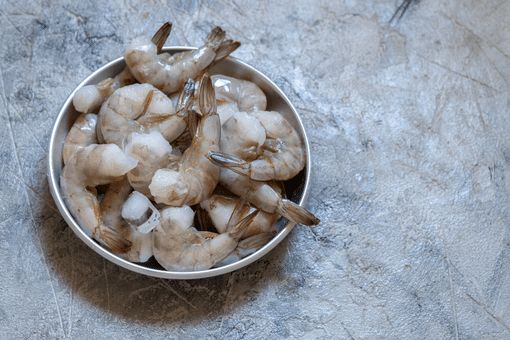
Different Hook Sizes To Use With Shrimp
The right hook size will depend on how big or small your shrimp is. Bigger hooks will place too much pressure on the shrimp, so they won’t be able to move around. The shrimp need to be able to move to attract fish towards them.
Shrimp that is roughly 2 inches wide will work well with a #1 hook. If your shrimps are bigger than that, use a 1/0. For smaller shrimps, use a #2 hook.
These are rough guidelines but always trust your instincts. If you think your hook seems too large for the shrimp, use a smaller one. Conversely, if your hook seems too small, the shrimp will fall off easily, so use a bigger one.
Shape-wise, use circle-shaped hooks as these are better for live bait. Live shrimp should only be used with small hooks, as larger ones will kill the bait easily.
Conclusion
Using live shrimp as bait can increase your chances of catching fish! Shrimp are very versatile, so they can be used as bait throughout the year. Many types of fish see shrimp as a natural food source, so they are easily attracted to their sight and smell.
If you want to use shrimp as bait, you can save yourself some money by catching them yourself. If you are new to fishing, using live shrimp can help you learn more about live bait before you move on to other species.
Lastly, if you do decide to fish in freshwater, always research the rules in your area in case they restrict using live bait.
- Do You Need An Indicator For Nymph Fishing? - November 16, 2023
- Fishing Safety Tips For Families - September 25, 2023
- What Is The Best Time To Night Fish At A Lake? - September 18, 2023



